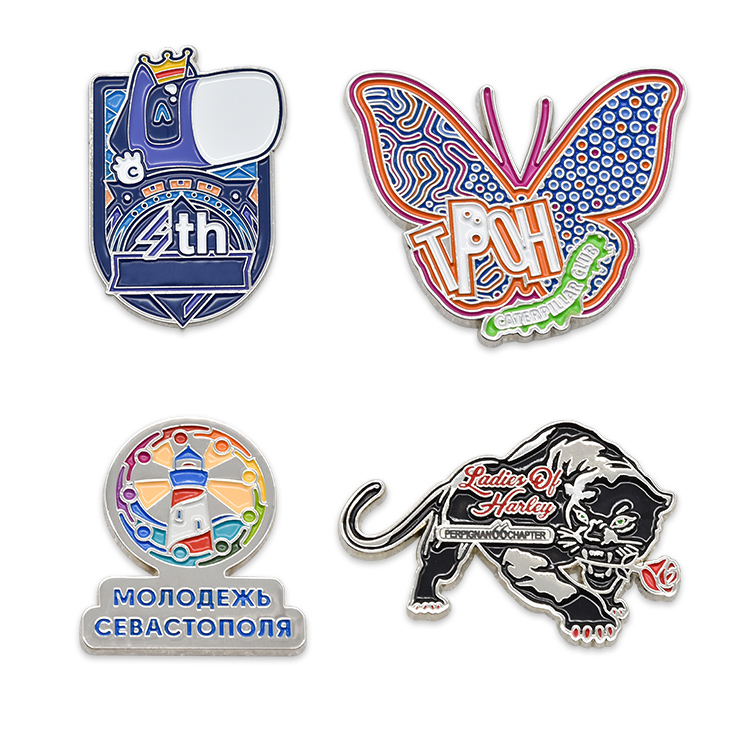In badge making, some badges can clearly see their craftsmanship, but some badges have little difference in appearance, but they use different craftsmanship, and their prices and materials are usually different. Let’s briefly introduce some badge craftsmanship that are easy to confuse and their identification.
1. Cloisonné and imitation enamel badges: Cloisonné badges are also called hard enamel badges or real enamel. Real enamel badges are the highest-end metal badges among all badges, followed by imitation enamel. Real enamel and imitation enamel look very similar, so how to distinguish their craftsmanship? Please see the following points:
From the material point of view: real enamel uses pure copper, that is, red copper, as the main material, and the main material of imitation enamel can be red copper, brass or iron.
From the color point of view: real enamel uses solid particle cloisonné glaze, and imitation enamel uses enamel color paste, so the color of imitation enamel is obviously richer than that of real enamel.
Firing temperature: real enamel needs to be fired at a high temperature of 800 degrees, and imitation enamel can be fired at 100–200 degrees.
The color of real enamel looks granular, while the imitation enamel is relatively flat and smooth.
3D effect, the surface of real enamel is slightly convex and arc-shaped, while the surface of imitation enamel is smooth.
2. Imitation enamel badges and paint badges: This is easier to identify. The surface of imitation enamel badges is smooth, while the surface of paint badges has a certain sense of concavity and convexity. The paint color part is concave, while the metal lines or metal surface are convex. It is worth mentioning here that sometimes the surface of paint badges will be smooth if glass is added. At this time, you need to identify carefully.
3. Paint badges and bite plate badges. Paint badges have a stronger sense of concavity and convexity, and their thickness is generally 1.2mm, while bite plate badges have more delicate lines and their thickness is generally 0.8mm.
4. Stamping badges and paint badges: Stamping badges only have metal colors and no coloring, while baked badges will be painted and colored.
5. Zinc alloy badges and other badges; the biggest feature of zinc alloy badges is that the cross section is generally slightly tilted, while general copper and iron badges are generally not tilted.
Post time: Jun-14-2024

